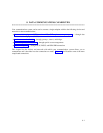
DATA CONNECTIVITY — AN OVERVIEW 7-7
_ ______________________________________________________________________________________
_ ______________________________________________________________________________________
_ ______________________________________________________________________________________
1 1 1 1 1 1 1 1SERIAL
0 0 0 0 0 0 0 0
0
1
1
1
1
0
0
0
0
1
1
1
1
0
0
0
PARALLEL
Figure 7-4. Serial vs. Parallel
Type of Communications Channel
Channels can be classified according to the the type of switch that creates them, the method used to assign
them, the type of information they pass, and the transmission mode.
Creating Switch — Packet vs. Circuit Switches
Data can be channeled through packet switches and/or circuit switches:
• Packet switches transport packets of data — consisting of header, trailer, and text information — as
integral units from their origin to destination. To transport the packets, these switches provide one or
more paths that all connections share. Along these paths, users are assigned a virtual circuit so that
individual communications streams can be distinguished. The virtual circuit consists of all packets of
data that are addressed to the same destination.
• Circuit switches provide a dedicated path between two endpoints. On circuit switches, data is sent as a
continuous stream of bits, bandwidth is guaranteed, and delay is limited to propagation time.
The DIMENSION, System 75, System 85, and Generic 1 and 2 communications systems provide only circuit
switching, although they can interface with packet switches through external packet assembler/disassembler
devices. See chapter 8 for more details on the type of connection.


















